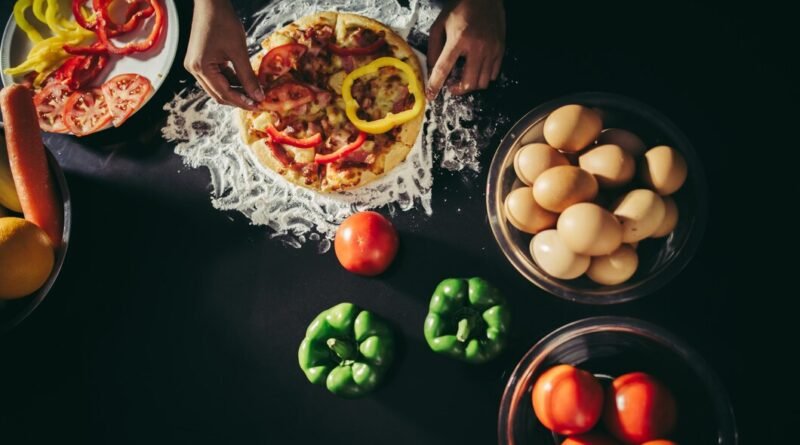Environmental Impact of Pollaste Production
Introduction to Pollaste
Have you ever come across the term “pollaste” and wondered what it means? If you’re curious about this unique poultry product, you’re in the right place! In this article, we’ll dive deep into the world of pollaste, exploring its history, culinary uses, nutritional value, and much more.
What is Pollaste?
Pollaste is a type of poultry meat that comes from a young chicken, typically between 70 and 120 days old. It’s known for its tender texture and mild flavor, making it a popular choice for various dishes.
The History of Pollaste
The origins of pollaste can be Trace back to traditional European cuisine, where it gained popularity for its versatility in cooking. Over the years, it has made its way into kitchens around the world, becoming a staple ingredient in many households.
How Pollaste is Made
Pollaste is produced by raising young chickens in control environments to ensure their health and well-being. These chickens are fed a balanced diet and given ample space to move around, resulting in high-quality meat that is both tender and flavorful.
The Culinary Uses of Pollaste
Pollaste can be used in a wide range of dishes, from soups and stews to grill and roasted preparations. Its mild flavor makes it a versatile ingredient that pairs well with various herbs, spices, and sauces.
Nutritional Value of Pollaste
When it comes to nutrition, pollaste is a great source of protein, vitamins, and minerals. It’s low in fat and calories, making it a healthy option for those looking to maintain a balanced diet.
Benefits of Consuming Pollaste
Consuming pollaste can offer several health benefits, including improved muscle growth, better immune function, and enhanced energy levels. Its nutrient-rich profile makes it an excellent choice for promoting overall health and well-being.
Potential Risks and Side Effects
While pollaste is generally consider safe for consumption, it’s essential to handle and cook it properly to avoid foodborne illnesses. Always ensure that pollaste is cooked to the recommended internal temperature to kill any harmful bacteria.
How to Store Pollaste Properly
Storing pollaste properly is crucial to maintaining its freshness and quality. It’s best to store raw pollaste in the refrigerator or freezer, ensuring it’s well-sealed to prevent cross-contamination with other foods.
Cooking Tips for Pollaste
When cooking pollaste, it’s essential to use gentle cooking methods to preserve its tender texture and mild flavor. Whether you’re grilling, roasting, or braising, keep an eye on the cooking time to avoid overcooking.
Popular Pollaste Recipes
Looking for some inspiration? Here are a few popular pollaste recipes to try:
- Pollaste soup with vegetables
- Grilled pollaste with herbs and spices
- Roasted pollaste with garlic and rosemary
Comparing Pollaste with Other Poultry
Compared to other poultry options like chicken and turkey, pollaste offers a unique flavor and texture that sets it apart. Its younger age results in more tender meat, making it a favorite among food enthusiasts.
Environmental Impact of Pollaste Production
Like all agricultural practices, pollaste production can have an environmental impact. However, sustainable farming methods can minimize this impact, focusing on responsible water usage, waste management, and land conservation.
Ethical Considerations
When choosing pollaste, it’s essential to consider ethical factors, such as animal welfare and farming practices. Opt for products from reputable sources that prioritize humane treatment and sustainable farming.
Conclusion
Pollaste is a versatile and flavorful poultry option that has gained popularity in kitchens worldwide. From its rich history to its culinary uses and nutritional benefits, pollaste offers something for everyone. Whether you’re a seasoned chef or a home cook, adding pollaste to your menu can elevate your culinary creations and promote a healthier lifestyle.
FAQs
- What does pollaste mean?
- Pollaste refers to poultry meat from a young chicken, typically between 70 and 120 days old.
- Is pollaste healthy?
- Yes, pollaste is a healthy source of protein, vitamins, and minerals, low in fat and calories.
- How should I store raw pollaste?
- Raw pollaste should be stored in the refrigerator or freezer, well-sealed to prevent cross-contamination.
- What are some popular pollaste recipes?
- Popular pollaste recipes include soup with vegetables, grilled pollaste with herbs, and roasted pollaste with garlic and rosemary.
- Are there any ethical considerations when choosing pollaste?
- Yes, it’s essential to consider animal welfare and farming practices when choosing pollaste, opting for products from reputable sources.




